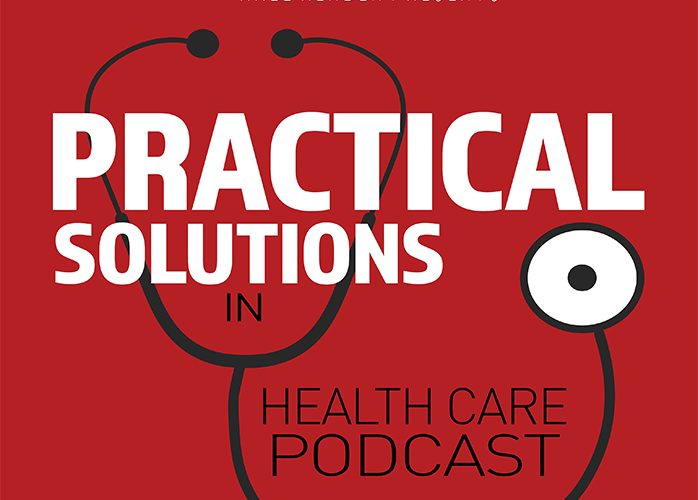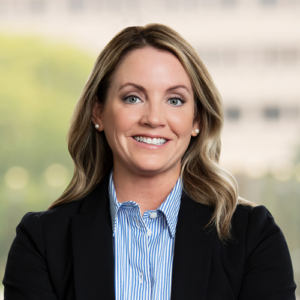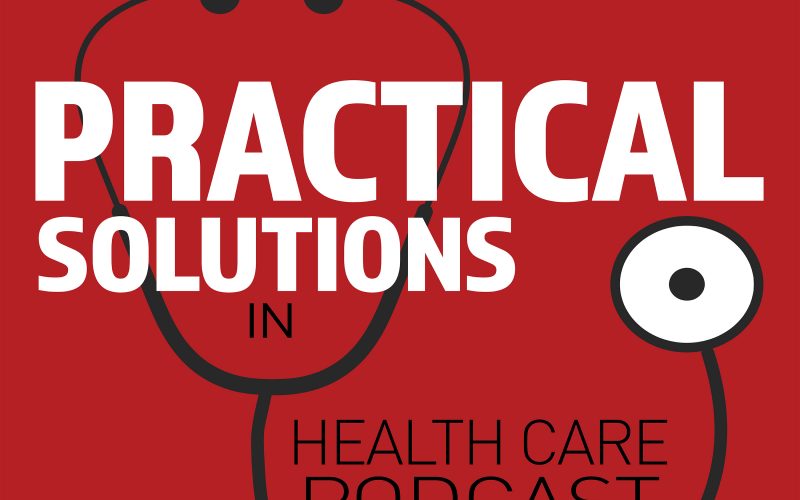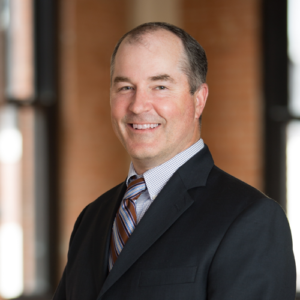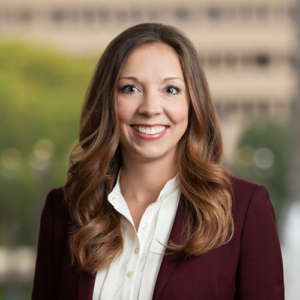Real Estate in Health Care: A 15-Minute Discussion of Key Health Care Real Estate Trends
Real Estate in Health Care: Discussion of Key Fraud and Compliance Considerations, Changing Market Conditions and Opportunities
In this most recent episode of Hall Render’s “Health Regulatory Update,” Joe Wolfe discusses health care real estate trends and compliance issues with Libby Park and Addison Bradford from Hall Render’s real estate service line.
Podcast Participants

Joe Wolfe
Attorney, Hall Render
Health Regulatory Practice Group Leader

Addison Bradford
Attorney, Hall Render

Libby Park
Attorney, Hall Render
Joe Wolfe: Hello, and welcome to Hall Render’s Practical Solutions Podcast and Health care Regulatory Update. I’m your host Joe Wolfe, and I’m a shareholder with Hall Render. We’re the largest health care focused law firm in the country. And today we’re here to discuss fraud and compliance issues tied to health care real estate. And I have with me my colleagues Libby Park and Addison Bradford from Hall Render’s health care real estate service line. Before we dig into the content, Libby and Addison, can you introduce yourselves?
Libby Park: I’m happy to be here with you and Addison today. My name is Libby Park and I’m an attorney practicing in Hall Render’s Denver office. I’m a member of our health transactions team, and I work primarily on transactional matters relating to real estate and land use for our health care clients across the United States. Thanks so much, Joe.
Addison Bradford: Yeah, thanks for having us, Joe. My name is Addison Bradford and I’m here in our Indianapolis office. And most of what Libby said applies to me, I am within our health transactions group, specifically within our real estate service line. And Libby and I, and the rest of the folks on our team, help work on a wide variety of real estate arrangements, most of which involve at least some level of a compliance aspect.
Joe Wolfe: Great. Thanks, Libby, and thanks, Addison. And then I’ll just add, in my practice, I focus on fraud and abuse, Stark and anti-kickback compliance and physician arrangements. And my practice delves into real estate as well. And I think as we start to frame up this discussion, we all can agree that health care real estate is already a complex area in health law. And then when we layer on top of that other issues and more complexity like licensure and reimbursement and tax exemption, bond financing, and then Stark and Kickback on top of that, it gets even more complex.
And as all of us that are working in this space and working with clients nationwide know, it’s there has been even more complexity over the last few years as we’ve seen the pandemic and real estate issues unfold related to that. Obviously, many health care organizations had leasing arrangements in place with physicians. Space challenges have played out over the last few years. And now we’re having a discussion here today to talk about some of that complexity, but we’re going to do that in hopefully a very straightforward way in just 15 minutes. So I’m going to pose a few questions to Libby and Addison. And we’ll start off with Libby. Libby, first, when we talk about real estate in health care, what do we mean? What are the types of entities and players we’re talking about? And why does real estate matter in the health care space from your perspective?
Libby Park: Thanks, Joe. That’s a great question. And I think your initial introduction to health care real estate more broadly was right on point and a great intro for what we’re kicking off here today. Generally speaking, health care real estate encompasses any real property and land use issue that a health care entity may be dealing with. Substantively, this can mean a lot of things, like commercial leasing, purchasing and selling real property, medical development of health care campuses and medical office buildings. We also deal with things like tax exemption for real property, zoning compliance, negotiating easements and land use agreements, performing environmental inspections and remediations, and also compliance and licensure issues that are tied to real property.
In terms of the entities that health care real estate affects, this is also very broad. We work with hospitals and health care systems nationwide, as well as individual providers, physicians, dentists, and physical therapists, for example, who are looking to start practices or secure space where they can provide care to patients. Health care entities range from large urban providers to small rural hospitals and health care systems. It really runs the gamut. And even with the increase in telehealth and transition to virtual care that we’ve seen over the past two years during the COVID pandemic, we’re still seeing that there is a need for real property space, and health care providers need these brick and mortar locations to provide care to patients and for administrative uses. That’s a broad overview.
Addison Bradford: If I can add to that, I think one of the challenges when it comes to health care real estate is a lot of the players are not health care entities, especially when it comes to commercial landlords that they might be leasing from, or even developers who don’t have experience within the health care space. One of the challenges we face is educating a lot of those non-health care parties about the regulatory environment in which hospitals, health care providers sit in and how that dictates the terms of the agreements that those parties enter into.
Joe Wolfe: That’s a good thought and great thoughts from both of you. Addison, that’s been my experience as well. You’re asking a landlord, a commercial property developer to step into our health care world with all of these additional levels of regulations and make sure that we’re helping them mitigate risk under this framework that is very different from any other industry. So I appreciate those comments.
I think that’s a good segue to the regulatory piece a bit. And my next question is for Addison. For us who work in this space, we understand that there are some special rules, notably the Stark law and the Anti-Kickback statute that create a framework that we need to follow when we’re contracting, especially with physicians, but in the health care space, especially with an entity or a provider that makes referrals. And in that context, sometimes there’s a need to self-disclose compliance issues as well. So I know Addison, you’ve been close to some recent judgment data and self-disclosure data related to real estate. What, if anything, does that data available related to Stark and Kickback tell us about lease provisions and more generally about other real estate arrangements that may trip parties up in this health care space?
Addison Bradford: Yeah, so we track settlement data that OIG and CMS put out as to the Anti-Kickback Statute and the Stark Law respectively, as well as monitor the settlement and judgment data that the DOJ puts out. And although there are gaps in some of that data, we can see from those settlements and judgments general trends and maybe what the government’s most concerned about and just generally the types of arrangements that are tripping parties up.
I’ll tell you the one trend we generally see is that the real estate compliance issues can often be a sign of bigger compliance issues within the organization outside of real estate. Not too many of the settlements and judgments we see are just related to real estate. It might be physician comp and real estate. It’s a number of other items. So I think it’s interesting is that it could be a sign of something bigger going on with an organization.
But in terms of the real estate specific OIG settlements and judgments we see, a lot of what we see is so called sham real estate arrangements, where it’s a physician or a hospital or some other provider that is leasing space that they don’t intend to use so that the owner of the building is getting that rental revenue, but ultimately they’re not using that space. In other cases, it’s way below fair market value rent. One of the essential elements of fitting within the rental of office space exception under Stark and within the space rental safe harbor is that the rental rate be fair market value. And there are a number of settlements and judgments where that isn’t the case.
And that makes sense to a certain extent. Not everyone that has been subject to these settlements and judgments is presumably acting nefariously, but fair market value isn’t readily known, necessarily. It’s why parties engage appraisers and even brokers to opine on what the fair market value is. So they may say, “Oh, I think this is market,” but especially with the commercial landlord, who’s not dealing with health care might say, “Well, this rate is market, it’s not a big deal.” Then they sell the building to a different provider and the relationship becomes subject to Stark and Anti-Kickback, and they realize, “Oh, it actually wasn’t fair market value.” So given the lease specific nature in that context of Stark and Anti-Kickback, it makes sense that a lot of those settlement and judgments stem from fair market value issues.
Joe Wolfe: Great. Thanks, Addison. And staying in line with the compliance discussion, Libby, I know you assist health care entities with their commercial leasing arrangements. What are the types of lease terms and compliance considerations that they should be considering?
Libby Park: Thanks so much for that question, Joe. You’re exactly right. And a lot of the points that Addison touched on in his response are relevant to commercial leasing arrangements as well, both from compliance language perspective, and also documentation that we need to ensure is included in the file for each leasing arrangement. A commercial lease has both business terms and legal terms. And I’ll touch on both of these sort of buckets of what we want to consider in a commercial leasing arrangement.
First, we’ll touch on business terms, which can vary significantly depending on the negotiating power of the health care client as well as the physical location of the property. Things that health care clients consider when entering into these types of arrangements are the length of the term of the lease. So for example, how many years will the initial term be? Do we want to be in the space for five years or 10 years? Are we going to negotiate subsequent renewal options for this arrangement to lock down the security of this space for additional years? Rent, this is of course a big one, and health care providers want to be able to lock in favorable financial terms for cost savings on rent and also potentially secure tenant improvement allowance to help build out their space.
Other considerations are expansion rights, considering do we want to lease adjacent space in the building if that becomes available, or potentially purchase the space? Assignment provisions, that’s another business term where a health care entity may want to build in the flexibility to assign or transfer the lease without having to obtain landlord consent down the line. The last business term I’ll touch on is an exclusive use provision. And this type of provision in a lease prohibits a landlord from leasing space to a competing entity or another health care entity that’s providing the same type of health care services in the building.
Let’s transition to compliance considerations. Each health care client should assess and flush out if their lease agreement is implicated by Stark and AKS. There are a couple ways that we advise clients to do this. One of these is requesting that the landlord complete a compliance questionnaire or certification. And this essentially is a landlord self-disclosure and agreement documenting if there is physician ownership in the landlord entity. And if the landlord’s an individual, is this individual a physician or an immediate family member of a physician? If the landlord is an entity like a limited liability company, we ask that entity to certify if there’s any physician ownership in the interest of the landlord entity. And depending on what we see in this certification, we can tailor the language of the lease to ensure that the necessary compliance language is included in the lease agreement itself.
I want to touch a little bit on how we document the fair market value of rent in commercial leasing arrangements. As Addison pointed out, this can really be an important piece of ensuring that the lease is compliant. And what we do here is generally connect with a broker or an appraiser, and have a broker opinion of value document that rental rate, as well as any incentives like tenant improvement allowance, are in fact commercially reasonable and consistent with fair market value for the specific location of the premises in the country. And so having that documentation and ensuring that the rental rate is within what is considered commercially reasonable is very important.
Two other items that we ensure are in commercial leasing arrangements are a floor plan that documents with specificity exactly the space that the health care tenant will be using. And then the compliance language that we include are things like representations and warranties from both landlord and tenant that neither is an excluded provider under any of the federal health care programs. We also include specific HIPAA, Stark, and AKS written language that both parties agree to in the commercial lease agreement.
Joe Wolfe: Great. Thanks, Libby. I’ll give a wrap up question in a second, but just as question for Addison. We previewed earlier that the challenges around COVID, now we know there are market challenges out there as well, I think particularly related to inflation. Inflation right now is at its highest in the past 40 years. Addison, how do you anticipate and draft around changing market conditions like this when you’re working on health care real estate arrangements in order to reduce the likelihood of compliance issues in the future years? How do you tackle that?
Addison Bradford: Yeah, the first step is just anticipating what those might be, based off of the particular relationship you’re looking at. So we’ve talked about leasing a lot thus far. So an example, if you have a 20-year lease agreement, well, you need to anticipate that the markets may change a lot more during that time such that the rental rate may… You may need some mechanism to adjust that rental rate to make sure it’s fair market value. It’s like one of the things we’re seeing right now, especially with inflation being what it, is the consumer price index is… I think it is somewhere around 8%. It can vary slightly, but it’s at significantly higher than maybe the one to two percent we’re used to. And many leases escalate the base or the annual rent based on that CPI index. So, in some cases you’re having an 8% increase in the rent.
And that’s really significant, and it can, not to say in every case it’s going to push the rental rate outside of fair market value, but certainly in some cases it will. So it’s anticipating those kinds of items and potentially setting, for example, every five years, redetermined what that fair market value rental rate, building in those provisions to make sure that, yeah, it may be fair market value today, it may be commercially reasonable today, or the relationship more generally may be okay, but in 10 years, some mechanism to address any of those issues.
And then I think that the second thing I’ll note on this is reimbursement costs are, from what I understand, are continuing to go down in some cases. And hospital operating margins are getting slimmer. So I think there will likely be some folks that are looking to cut costs. But I think just from approaching a health care real estate standpoint and predicting the future is to remain and to stay vigilant in negotiating health care real estate arrangements to make sure that they are consistent with the different health care regulatory laws and regulations that apply to them, even in the midst of a difficult market in which many of our clients are operating in.
Joe Wolfe: Great. Thanks, Addison. Just a final question wrapping up, do the two of you have a final thought for those listening in to today’s podcast? Libby, why don’t you go first?
Libby Park: Sure, Joe. I would just like to say, thanks everyone for tuning in. If I can ever help you with any health care real estate-related issues, particularly in this changing environment as we transition from the COVID pandemic, please feel free to reach out to me directly.
Joe Wolfe: Great. And Addison?
Addison Bradford: Yeah. The last piece of advice is I know [inaudible] it seems like we’re always… Or especially in the health care real estate realm when we’re working with a lot of developers, the health care real estate attorneys can seem like impediments to getting the deal done and slow down that process. But I think just the challenge with thinking about the role that attorneys and counsel play in this is realizing that they’re an asset on these deals, because ultimately, if there’s a compliance action that arises out of one of these deals, that might be way more expensive than the X number of dollars it took longer to negotiate or that you’re paying in rent. So I think my caution or challenge folks was to just have that mindset when reaching out to us or in-house folks.
Joe Wolfe: Those are some good thoughts. Again, we are the largest health care focused law firm in the country. And all day we are answering questions in this specific health care space. So to your point, Addison, some of my favorite calls are where a new client says, “Oh, I didn’t know you could just answer these kind of questions on the phone.” We have many situations where we’ve had the question you are asking over and over again in our niche and are able to add value immediately. So those are some good thoughts. Appreciate that.
And I appreciate everyone for listening in. Thanks for joining us today. If you’d like to learn more about fraud and compliance issues in health care real estate, please visit our website at hallrender.com, or reach out to Libby at lpark@hallrender.com, Addison at abradford@hallrender.com, or your regular Hall Render attorney. Please remember the views expressed in this podcast are those of the participants only and do not constitute legal advice. Thanks, and have a great day.

